Aqua Treasures: Top 10 Most Expensive Fishes in the World
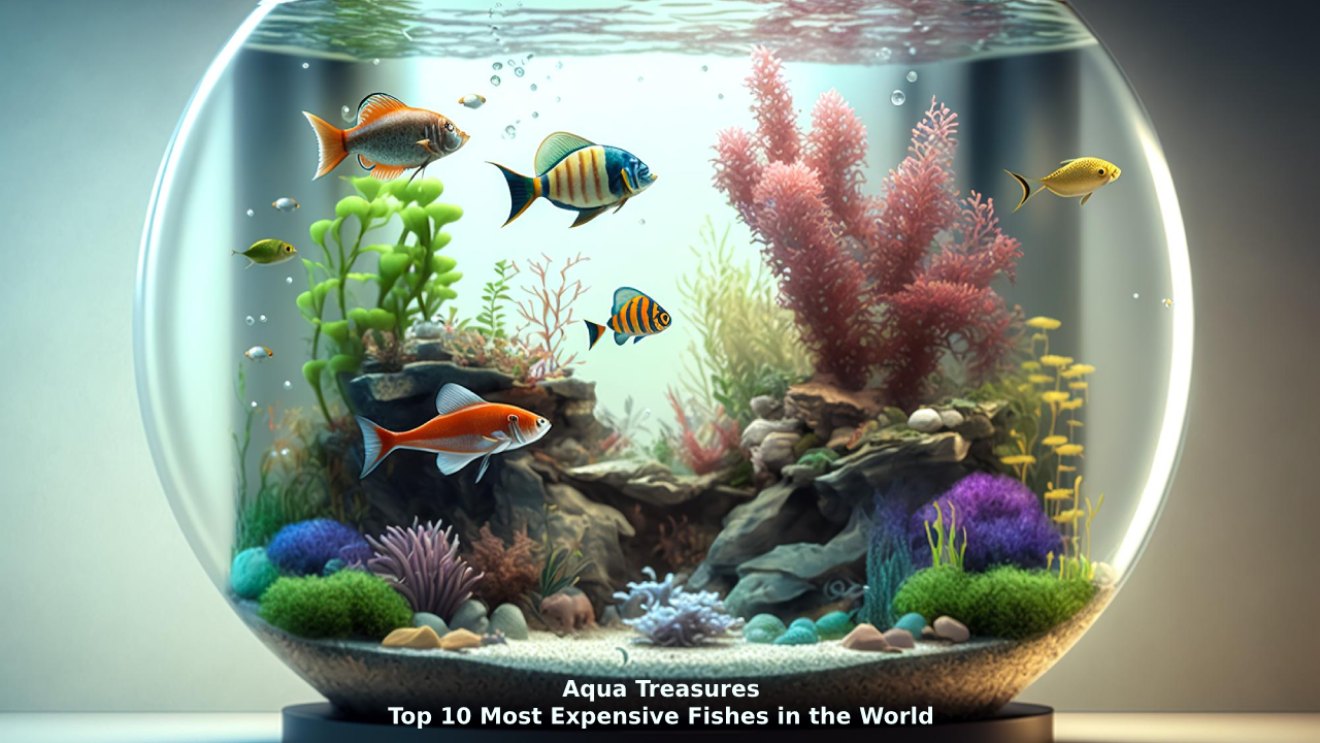
Page Contents
Fish are renowned for their appropriate types, fins, and scaling. They are submerged mammals that breathe via gills. They are placed in almost every waterway on Earth, from saltwater lakes and sewers to ocean depths fosses. From tiny fishes to enormous whale sharks, fish occur in an array of dimensions and forms. They make a significant contribution towards both aquatic and brackish habitats by acting as prey for bigger animals and assisting with preserving an exquisite equilibrium among nutrients and oxygenation in their habitat. Several fish species have high economic value as food producers for humanity. This article will provide the 10 most expensive fish in the world.
History of Fishes:
Fish have countless times been an outspoken component in human civilization. Geological evidence reveals that mankind started tarting wandering around a millennium ago, using simple tools like pikestaffs as well as netting. Primitive humans depended heavily on fisheries as a supply of sustenance, which proved essential for the growth of sacrificial connections.
Fish were closely identified with heavenly beings in former centuries, and hunting was deemed a sacred activity. For instance, the ancient Egyptians represented fish in their art and considered that specific species were symbolic of reproduction and rejuvenation. The ancient Greeks also worshipped fish, and Pohas identified notified with the waters as well as the harsh species that inhabited there. In the Medieval Ages, fish became a profitable venture, with a salfish-likesh-like complaint as well as tilapia being raised in ditches and gutters. European explorers started venturing farther away in pursuit of fresh fishing areas in the 1600s. When they encountered abundant fishing waters off the coastlines of North America and the Caribbean, fish rapidly was becoming a necessary imported good.
The fisheries sector saw significant changes throughout Industrialization in the nineteenth and twentieth centuries. Fish might now be collected further out from a source of support and delivered farther via novel techniques like brume-powered boats and freezing, which also created novel marketplaces for fisheries.
Yet, in the latest generations, poaching and climatic decline have had a considerable influence on fishery resources. As a consequence of the crushing extinction of several organisms, there are attempts to enhance morally defensible fisheries techniques and preserve aquatic habitats. Nowadays, fish constitute an important source of sustenance for thousands of individuals worldwide, and fishery assiduity remains to be crucial in the world's largest thrift. To ensure aquatic vegetation is maintained and developed effectively ly for a better future, additional sweats are required in light of the challenges affecting the assiduity.
Classification of fishes:
- Jawless fish- They lack paired fins and jaws.
- Ray-finned Fish- They have bony rays anchoring their fins.
- Lobe-finned Fish- They have squishy lobed fins that resemble terrestrial animals' limbs.
- Cartilaginous Fish- fish with cartilage-based skeletons as opposed to bones.
- Agnatha- They belong to the jawless fish category.
- Chondrichthyes- They are a subclass of fish that do have cartilage, including rays and sharks.
- Teleostei- They belong to the ray-finned fish subfamily.
- Bony Fish- They are a varied group with a bone-based structure.
Types of Fishes:
- Salmon
- Tuna
- Trout
- Catfish
- Cod
- Tilapia
- Haddock
- Swordfish
- Sardines
- Mackerel
Uses of Fish:
- They are used as a source of food as highly rich in proteins and omega-3 fatty acids.
- Many fish oil supplements are used in medicine to reduce cholesterol and reduce inflammation.
- Most of the fishes have cultural influence as they used by many nations in most of the devotional rituals
- They are used by scientists for their research, to study their behavior, genetics, and environmental impacts
- Most of the fish waste is used as a fertilizer which helps in agriculture
Fish as an Important Source of Food:
- Mostly all fishes contain omega-3 fatty acids and consuming that reduces the risk of heart disease or stroke.
- Eating fish is good for the eyes as they reduce the risk of muscular degeneration, which is a leading cause of vision loss in older people
- Most fishes have anti-inflammatory effects which reduce the risk of chronic diseases such as asthma, and even many types of cancers
- The most important benefit is that they are sources of protein which helps in building the tissues in the body.
Interesting facts and figures:
- Top tuna counties as determined by the Food and Agricultural Organization (FAO), the Maldives, Iceland, Hong Kong, Japan, as well as Portuguese, are the top fish-eating countries per inhabitant
- The workforce in fisheries with diligence Over 59 million individuals are estimated to be actively involved in fisheries and agriculture.
- As reported by the FAO, approximately 34 aquatic vegetation are currently overexploited, which can negatively impact the fishing industry and aquatic habitats.
- Nearly half of the fish global production is produced by monotheism, or fish farming, with significant producers comprising China, India, Vietnam, and Indonesia.
- Fish manufacturing is projected to be 179 metric tons internationally in 2020, with Offerings that are compatible with 37 of the overall, thus becoming the largest buyer.
Mentioned below are the world’s top 10 expensive fish:
- Platinum Arowana- worth $400,000
- Freshwater Polkadot Stingray- worth $100,000
- Peppermint Angelfish- worth $30,000
- Masked Angelfish- worth $30,000
- Bladefin Basslet- worth $10,000
- Neptune Grouper- worth $7,000
- Platinum Alligator Gar- worth $7,000
- Golden Alligator Gar- worth $7,000
- Australian Flathead Perch- worth $5,000
- Wrought Iron Butterfly Fish- worth $2,700
#1. Platinum Arowana- Worth $400,000
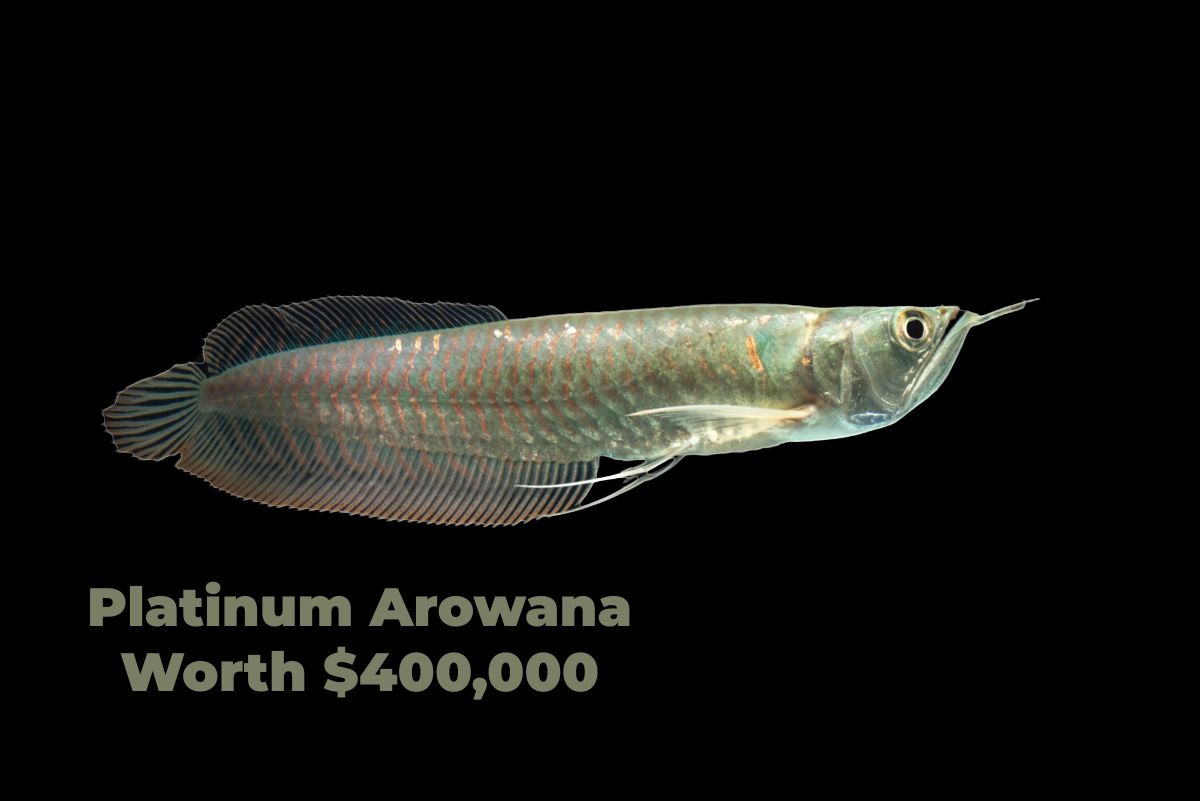
A stunningly beautiful and pricey fish category is the Platinum Arowana, generally known as the White Arowana. This could develop as much as three feet long and it has crimson pupils as well as candescent plate skin. It prefers eating an array of foods, especially different fish as well as mice and catcalls. Some frequently refer it to as the “monkey fish” since it's able to hop extremely long.
They are therefore infrequent and only obtainable via pukka ranchers or vendors, obtaining one that is challenging.
In consideration of this, the Platinum Arowana is among the most exotic fish that humanity has ever seen, with a market value that can exceed $400,000.
#2. Freshwater Polkadot Stingray- Worth $100,000
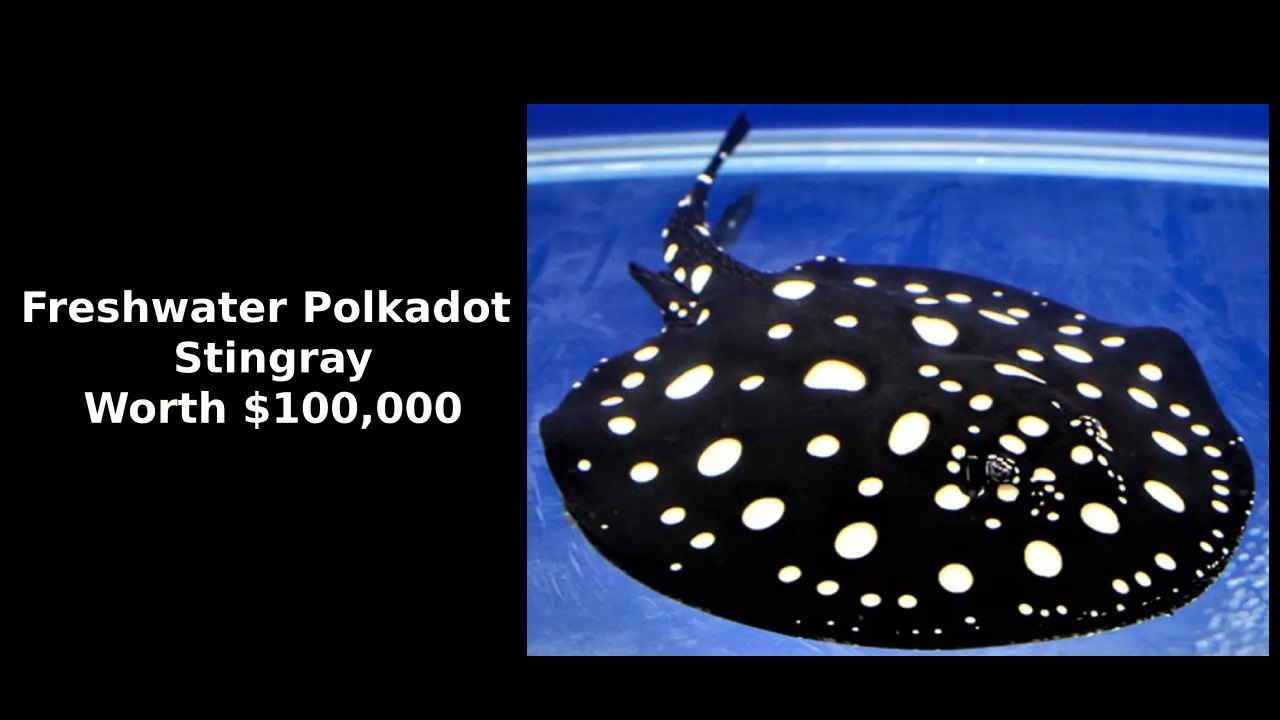
A variety of fish identified as the Freshwater Polka fleck Stingray can indeed be observed in the South American country of Brazil's Xingu River impoundment.
Its tail seems to have a hazardous chine and then a brown body with white smears. These species are fond of hiding in the mud, which makes it hard to capture them within the environment. Little surprising that fish is costly but only attainable to connoisseurs willing to pay a hefty price. The alternately most beautiful fish genus in recorded existence, the polka-fleck stingray retail for about $100,000.
#3. Peppermint Angelfish- Worth $30,000
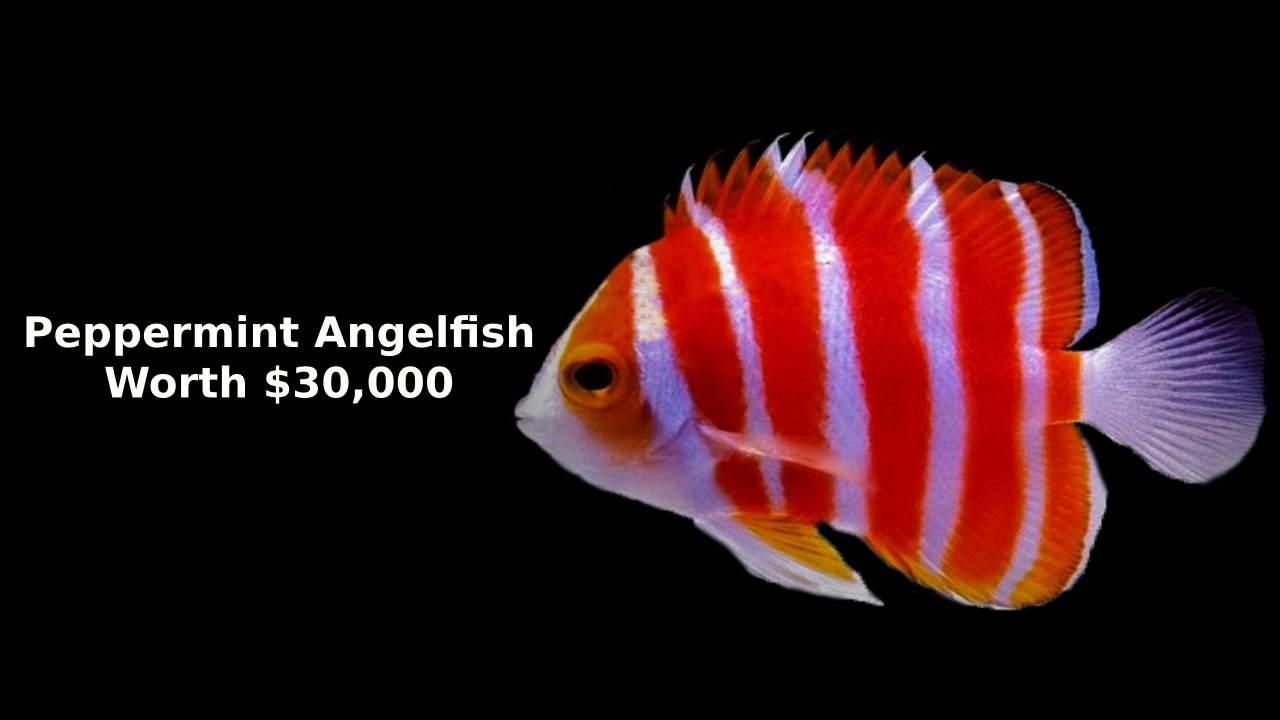
The Peppermint Angelfish is a fascinating species that, owing to its exquisite red and white stripes, pretends to be a delight. It dwells amid labyrinths and corals in the ocean of the South Pacific, but due to its location far beneath the sea, only lone divers can observe it. It consumes critters like ghouls and caterpillars. The pressure from attaching the fish to the face damages it, therefore it needs to be suited perfectly. The Peppermint Angelfish is attractive and valuable to possess in a conservatory due to being magnificent and enduring to acquire.
#4. Masked Angelfish- Worth $30,000
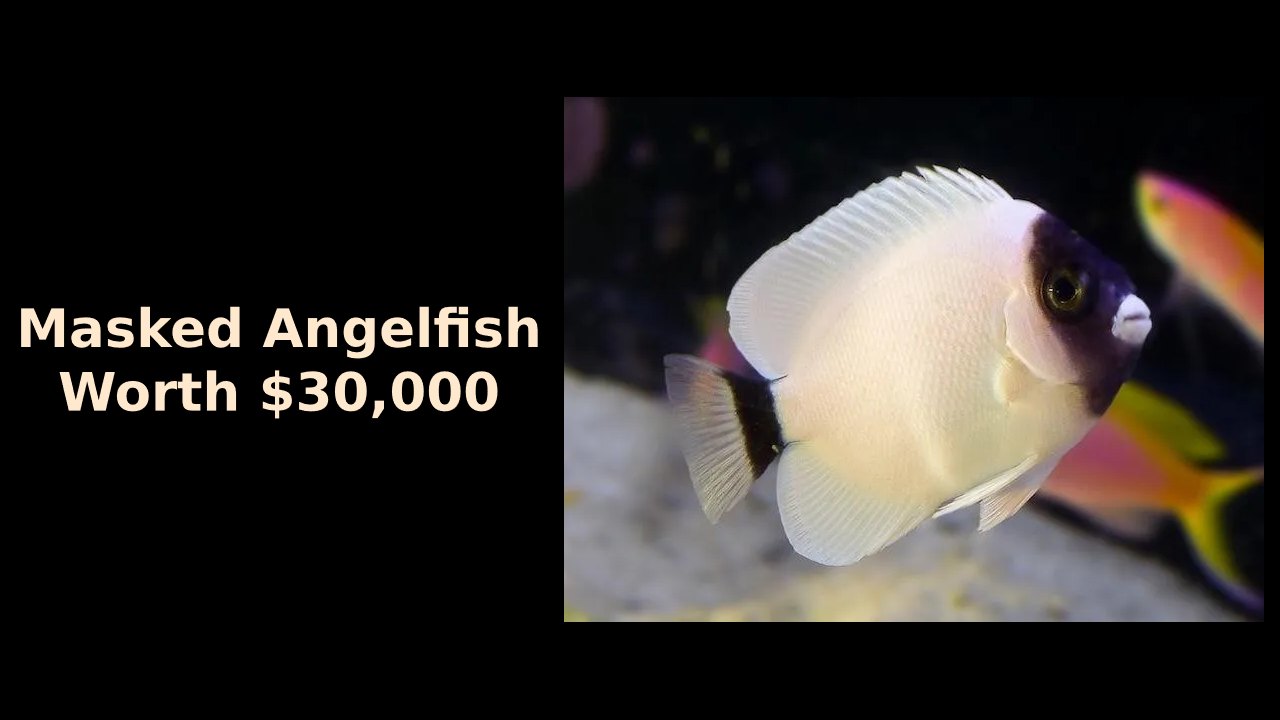
An ideal fish is the Masked Angelfish, having an unheroic tangerine fin and a turquoise body with a black and white vizard on its face. It dwells in the Pacific and feeds upon weak animals. It morphs from a girl fish to a guy fish initially. It has large fins which lend it a beautiful design and therefore can attain numerous altitudes. Some want to maintain it in fencing, yet since it requires a strict diet demand as well as being aggressive toward certain species, it is challenging to maintain. Well, due to its distinguishing characteristics and remote appearance, it is still legitimately attractive.
#5. Bladefin Basslet – Worth $10,000
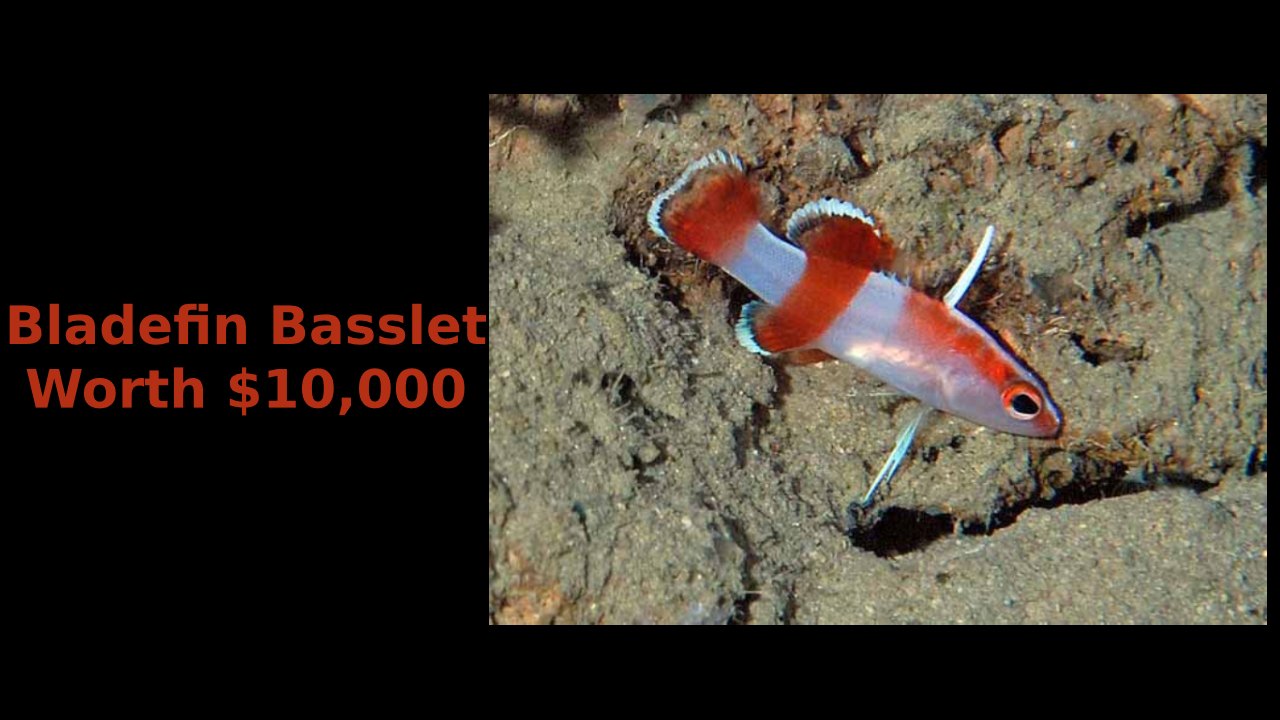
The Bladefin Basslet is a stunningly beautiful fish that was probably found first in the Caribbean Sea and stretch of the West Atlantic Coast. It is a small cousin of a prominent Golden Basslet. The Bladefin Basslet must be gathered from wildlife populations that used subs because they specialized in midst of more than 800 bases, accounting for its prohibitive cost of $10,000. This tiny, 3 cm fish has striking white as well as red stripes that make it a searched subtropical sea species among enthusiasts. It is a sensitive fish. Resized by pricing per inch, the Bladefin Basslet is among the most premium conservatory fish on the planet due to its tiny dimensions and substantial average price. Even if they are agreeable, exotic basslets like the Candy Basslet and the Golden Basslet also cause intense expenses in fish suckers.
#6. Neptune Grouper – Worth $7,000
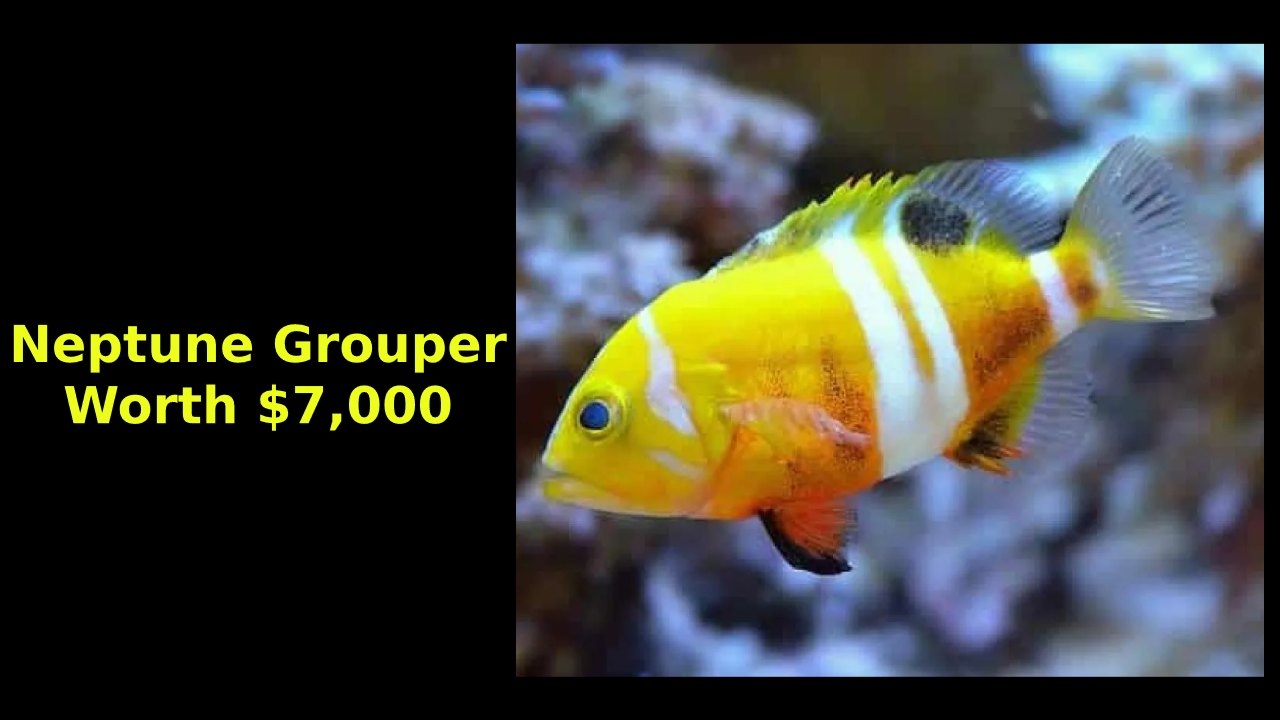
The Neptune grouper thrives naturally in a variety of marine habitats, from the Western Pacific Ocean close to Japan to the ocean depths trenches surrounding French Polynesia and Australia. This creature is a magnificent addition to any freshwater aquarium owing to its deep body as well as sharp rear fin, which are both accented by a noticeable blend of orange and white streaks. Yet, keeping a single of these gorgeous beasts can indeed be exorbitant, spending at least $7,000 due to the difficulties in crafting them to endure surface water pressure. This is because the Neptune grouper primarily lives at a depth of 200 meters, and only a handful has been successfully captured alive. They must take unconventional relaxation programs on a constant schedule to stay alive, which contributes to their exorbitant price. So far, the Okinawa Churaumi Aquarium in Japan, where they were first introduced in 2009, has been the only place where professional adults have been seeing them.
#7. Platinum Alligator Gas – Worth $7,000
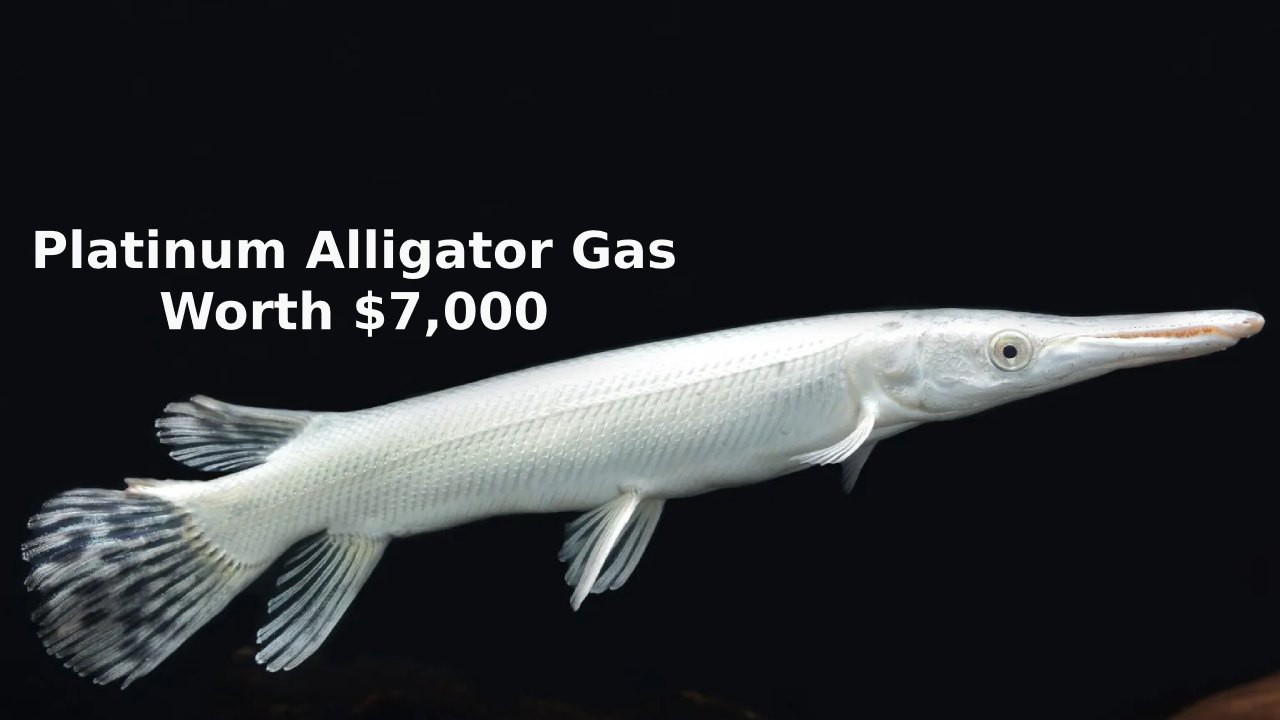
There are just one species of magnificent and captivating Platinum Alligator Garfish. The title “Alligator Gar” originates from its dazzling metallic white body scales as well as its lengthy conk, which gives it a remarkable alligator-like demeanor. This species may weigh up to 100 kg and extend up to three measures. It is a prehensile tail fish that consumes both crustaceans as well as other species. Platinum Alligator Gars are all well by fish enthusiasts and suckers because of their intriguing beauty. Yet, they are very accurate due to their scarcity and circumscribed vapidity. A noticeable and witching fish, the Platinum Alligator Gar is a valued acquisition for any fish sucker.
#8. Golden Alligator Gar – Worth $7,000
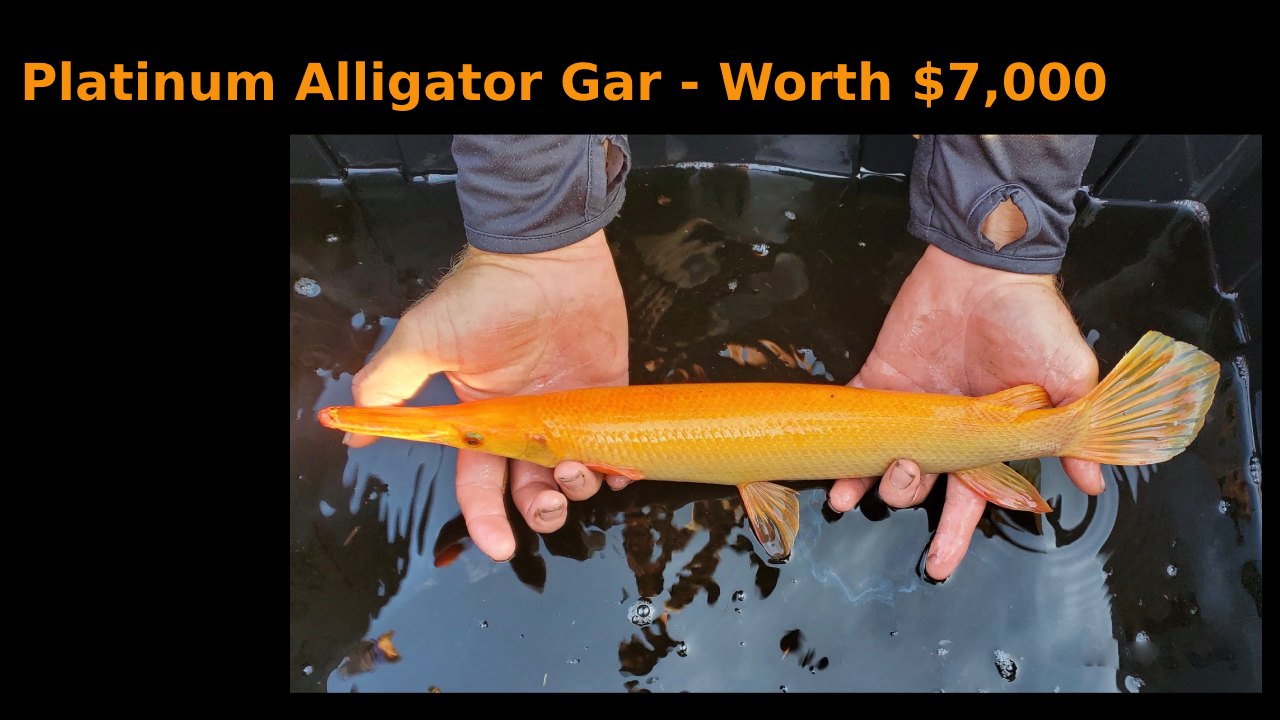
Even though to its dazzling golden hue and shimmery, extended length that allows for regal floating through the sea, the Golden Alligator Gar is well entitled. These species aren't confrontational despite possessing rows of razor-sharp fangs, providing them with a suitable option for fish enthusiasts who don't have to worry about just being stunk whilst preserving their habitats. Since it is just one in a million alligator gars that exhibit this special achromatism, the species could develop up to 10 bases long and weigh an incredible 350 pounds. As a corollary, its worth can reach over $7,000. They are also more demanding for enthusiasts because of the huge tank size necessary for maintaining them. A stunning and held-in high-esteem addition to any habitat is the Golden Alligator Gar.
#9. Australian Flathead Perch – Worth $5,000
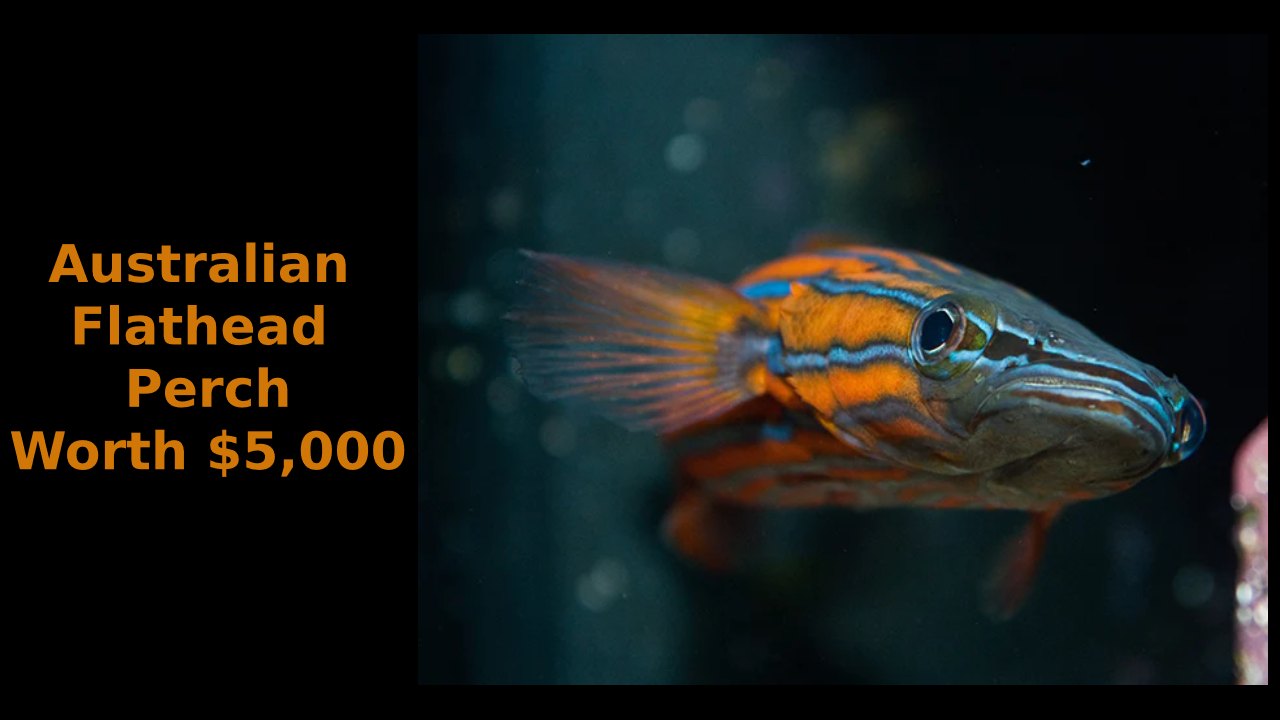
This species corresponds to a renowned fish taxonomy that was established in the Australian coastal seas. They have such a multitude of flatheads and extended bodies, and their brown or leafy-brown achromatism renders them quite difficult to spot in their local habitat. Because of its venison steaks and the excitement of catching, this fish, which can reach lengths of up to 60 cm and weighs up to 3 kg, is a desirable goal for longline fishing. It is an appealing and historic fish categorization for both gillers as well as the coastal ecosystem, notwithstanding that their trendiness has led to overfishing in certain locations and caused the establishment of laws aimed at regulating their crop appropriately.
#10. Wrought Iron Butterfly Fish – Worth $2,700
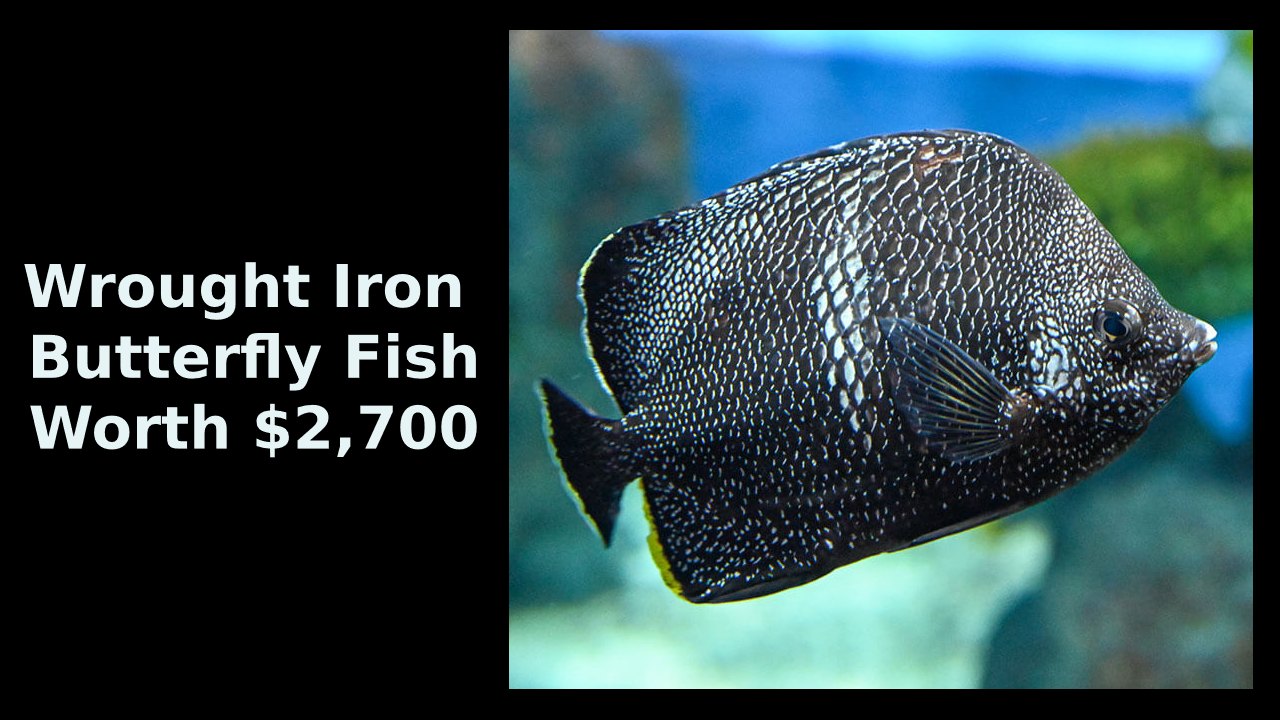
The Wrought Iron Butterflyfish ranks last on the list of the most prized fish to humanity. The Pacific waters are home to the thrust fish, which is predominantly located close to Japan's coastlines. This remarkable group has a remarkable metallic appearance, has been mostly ebony, and also has vivid anti-heroic streets on its tail and back wings. The Wrought Iron Butterflyfish wanders in groups in its native habitat and periodically gathers in clusters of dozens to feed. They like steep reefs wherein they graze on a combination of microalgae and crustaceans, and can reach a maximum length of 15 cm.
Bottom line:
With their delicious taste, thickness, and nutritious worth, invaluable fish are highly addressed. Nonetheless, there are several reasons why these fish are so pricey, including their uniqueness, complexity of capturing or tilling, and growing preference. Notable samples of costly fish are caviar, king grouser, and bluefin.
Whilst costly fish can be a pleasure as well as a statement of wealth, it's essential to think about how fishing methods affect the viability of ecological systems. Fishing decreases and damage to oceanic environments can happen from fishing as well as other unethical fishing methods. Again for sake of future generations, it is crucial to encourage ethical fishing gear and moral seafood selections. Furthermore, people must remain on the lookout for deception and misrepresentation in the fishery, which can lead to deceptively promoting overpriced fish. It's crucial to acquire fish from credible vendors and also to enlighten oneself on the provenance and long-term survivability of food being consumed.
FAQ.
China is indeed the nation's largest purchaser of fish. Every year, the nation imports over 22 million metric tons of fish, which is greater than about double the quantity produced by the U.s.
The most ecological options include farmed favourites like tilapia and arctic char, in addition to wild-caught giants like albacore tuna as well as rockfish.
Goldfish could be retained as feng shui species at home since they provide riches as well as best wishes. Arowana fish, Butterfly Koi, plus Rainbow fish are therefore possibilities
Fish has a far less harmful effect on the environment than territory nutrition. Aside from being one of the least carbon-efficient meals just on the universe, wild-caught fish demands no soil and no groundwater, and it has a considerably smaller ecological impact: no sea creatures are currently endangered as a consequence of hunting.

Aditi is an Industry Analyst at Enterprise Apps Today and specializes in statistical analysis, survey research and content writing services. She currently writes articles related to the "most expensive" category.